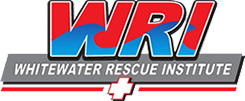Inland Spill Response: Communications is key. It was 11:30 pm, on a moonless night and the temperature was hovering around 30 degrees Fahrenheit. The river was lit up with an array of floodlights from shore, mixed with the not-so-bright navigation lights from the boats. Our spill response team was split between three boats assisting in a salvage operation on a river channel. The web of stabilization cables and ropes running from the midstream back to shore, coupled with the hundreds of feet of boom, ropes, anchor lines, and mid-stream anchor buoys, made navigation challenging for even our most experienced boat captains.
The crux moment of the evening came when we had to pull a 1-inch cable upstream while keeping it clear from a large water intake. The cable had been used to anchor the sunken vessel to shore. Due to the weight of the cable, and the direction of the current, it seemed highly likely that the boat and cable would be swept towards the water intake. We decided that the best course of action would be to use a second boat to assist in towing the towboat, and use this tandem system to remove the cable. As we quickly realized, communication between the two boats and their minimal crews was going to be nearly impossible. Using a combination of hand signals and radios, we were able to throw a rope from the second boat to the cable towing boat, and manage to keep the cable away from the water intake.
Looking back on the incident, we all agreed that having more time to plan this coordinated movement would have been nice. Unfortunately, that is rarely an option in emergency response. By the time you make a plan, the situation has changed. For this reason, it is important that teams regularly train together and establish communication standards. Below is a list of things we think are important:
Designate a leader.
Before each new phase of an operation, regroup and hold a STRAPS briefing.
- Safety: Number One Priority
- Tasks: Goals and Assignments
- Risks Involved
- Actions to Minimize Risks
- Plans : Communication and Emergency Plans
- Safety & Stop Work Authority
Be clear and concise.
Delegate (Don’t Micromanage) positions.
Allow input, but don’t get bogged down by ideas.
Decide then execute.
Have a clear set of hand signals that everyone knows.
The only way to perfect this is to practice. Test your team by adding limitations to your trainings. Try leaving the radios at the shop. Allow the most inexperienced to step up into a leadership role. You will notice the difference on the next response.
“Whether you are a river-rookie or an experienced boater, WRI tailors their classes to what you need to learn in a fun and challenging environment. Their scenario based teaching approach creates an electric learning atmosphere where you feel like you are in actual river rescue situations. I would recommend them to anybody!”
